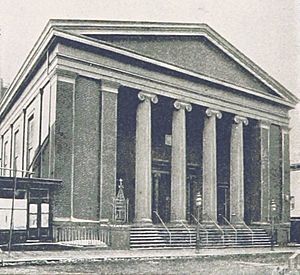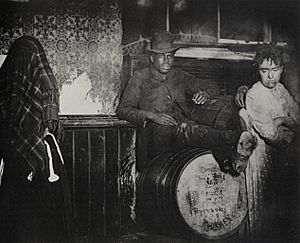Little Africa, Manhattan facts for kids
Little Africa was a neighborhood in Greenwich Village in New York City, mainly in the area known as the South Village. It was home to many African Americans from the mid-1800s until the early 1900s. During its time, Little Africa was the most important center for African American life in Manhattan.
Over time, African American communities in New York City moved northward. Before Little Africa, many lived in an area called Five Points. After Little Africa, communities grew in places like the Tenderloin, San Juan Hill, and eventually Harlem. The main street in Little Africa was Thompson Street, along with Minetta Lane, Street, and Place. Much of this historic area is now part of the Sullivan-Thompson Historic District.

Why Little Africa Formed
Little Africa began to grow after violent events in 1834. These were called the anti-abolition riots and happened in the Five Points area. People who supported slavery attacked those who wanted to end it. Many African Americans moved to Greenwich Village to find a safer place to live.
This new urban neighborhood was different from Seneca Village, which was a smaller, more rural community of middle-class African Americans further north. Seneca Village was later destroyed in 1857 to create Central Park.
Challenges and Growth
Even in Little Africa, the community faced difficulties. In 1863, during the American Civil War, the draft riots caused more violence. These riots were protests against a new law that forced men to join the army. African Americans were often targeted during these riots.
Despite the violence, the African American population in Little Africa grew after the Civil War. Many formerly enslaved people, known as freedmen, moved north from the Southern states looking for new opportunities.

Early History of the Area
Long before Little Africa became a neighborhood, the same general area had a special history. About 200 years before the neighborhood formed, when the Dutch ruled New York (then called New Amsterdam), there was a group of farms owned by Africans. This area was known as the Land of the Blacks.

